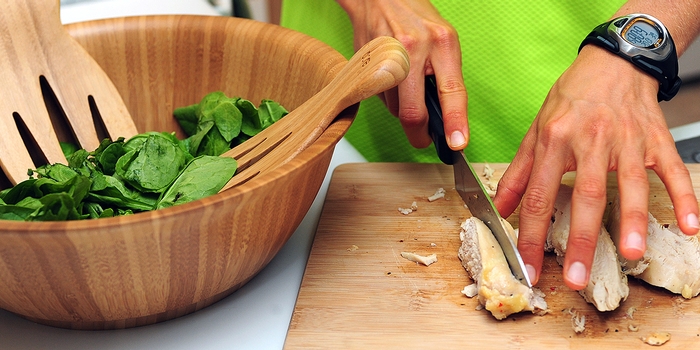Practical Suggestions for Health & Nutrition
![]()
![]()
December 14, 2017
By Orest Ludwig, Chelsea Piers Fitness Master Trainer & Precision Nutrition Level I Certified Trainer
Clean your pantry! A lot of us have a hard time resisting what is already in our homes, even if we could easily leave it behind at the store.
Buying and cooking your own food gives you the most control over what gets into your body. When you eat at restaurants, you will have to ask especially about refined sugar. You'll be surprise where sugar is added!
Buy organic as much as you can. When it has the USDA organic sign, it means NO chemical fertilizers, pesticides/herbicides, antibiotics, growth hormones, and medications to prevent disease and spur growth are given to the animals. It also means NO GMO’s (genetically modified organism) are used.
Eat a minimally processed food diet, free of added sugar and vegetable oil (processed fats).
Processed foods are high in empty calories, which means they are less nutrient dense, increase your insulin response and will alter your gut microbiome.
If you buy packaged foods, read the label. Start with the ingredient list. Make sure you know what is listed! What you put into your body will become your body!
Then look at the nutrition label. Look at the serving size; make sure you understand what that means. Look at the calories to get a general feel for how big the meal is. Look at the percent Daily Value (% Daily Value). The percent Daily Value puts nutrients on a scale from 0% to 100%. This scale tells you if there is a little or a lot of a nutrient in one serving of a packaged food. Use this percentage to compare the nutrient content of different foods.
Generally speaking try to get more of these nutrients: Fiber, vitamin A, vitamin C, iron, calcium, magnesium and zinc.
Try to get less saturated fat, sodium, cholesterol, and avoid trans fats.
The macronutrient recommendations are very individual, but generally speaking, this is what you should consume each day:
- 120 - 160g of protein
- 1g/lb of bodyweight carbohydrate
- The rest from fat. Ideally mixed between saturated, monounsaturated and polyunsaturated fats.

